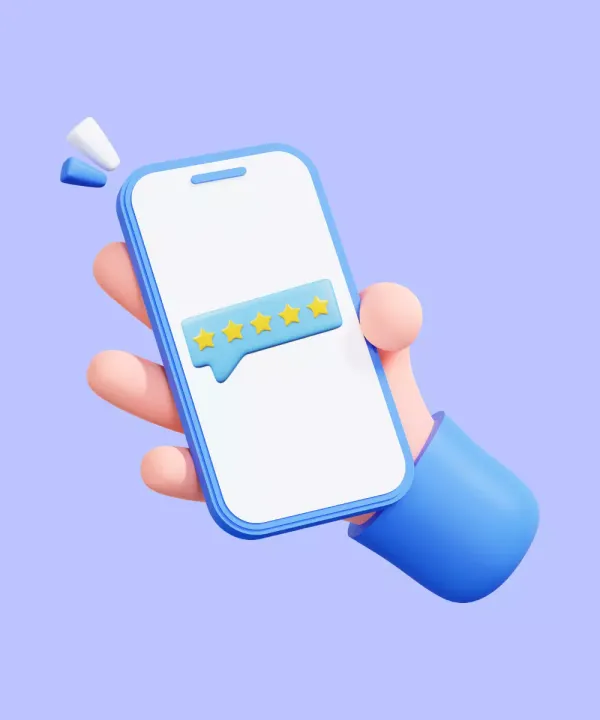Mobile applications have revolutionized the way we interact with the world around us. From ordering food to scheduling a ride, there's an app for almost everything. For businesses, having a mobile app can not only increase visibility and accessibility but also improve customer engagement and ultimately, drive revenue. However, developing a mobile app requires not only a great idea but also substantial financial investment. It requires a considerable amount of resources, including a skilled development team, advanced tools, and most importantly, funding. Securing adequate funding is often one of the most challenging aspects of app development, yet it is essential for transforming your innovative idea into a fully functional and successful app.
The purpose of this article is to provide a comprehensive guide on how to get funding for app development. Whether you are an aspiring entrepreneur with a groundbreaking app idea or a well-established business looking to expand your mobile presence, this article will walk you through the essential steps of securing funding for your app. With the right knowledge and preparation, you can secure the necessary funding to bring your app idea to life and ensure its success in the market.
How Startups Are Funded
For many startups, the journey from idea to fully-fledged business is a challenging one, filled with various stages of growth and development. Funding is a crucial element that fuels this journey, enabling startups to transform their innovative ideas into tangible products and services. It is important to understand that you can't just come and get money; you need to go through several phases, called rounds, to prove that your idea deserves investment. Each funding round is designed to accumulate enough capital to grow the startup and can take from 3 months to a year. Let's discuss the core stages of startup fundraising.
Pre-seed
Pre-seed funding is the initial capital used to bring a startup from concept to the early stages of development. This funding is typically used to build a prototype, conduct market research, and develop a business plan. It often comes from the founder's own savings, friends, and family, or angel investors who are willing to take a risk on a new idea. At the pre-seed stage, startups usually raise around $50,000 to $500,000.
Seed
Seed funding is the next stage after pre-seed funding. It is used to further develop the product, hire a team, and initiate marketing efforts. At this stage, startups usually have a prototype or minimum viable product (MVP) and some evidence of market demand. Seed funding often comes from angel investors, early-stage venture capitalists, and crowdfunding platforms. In the seed stage, startups typically raise anywhere from $500,000 to $2 million.
Series A
Series A funding is used to optimize the product or service and market fit. At this stage, the startup has a working product and a clear business model. The funding is typically used to improve the product, expand the team, and scale the marketing efforts. Series A investors usually include venture capital firms, and they expect a return on their investment in the form of equity or convertible debt. In the Series A round, startups usually raise between $2 million and $15 million.
Series B
Funding Series B funding is used to scale the business. At this stage, the startup has a proven track record, a solid customer base, and a clear path to profitability. The funding is typically used to expand the market reach, increase production, and hire more staff. Series B investors usually include venture capital firms, private equity firms, and strategic investors. In the Series B round, startups typically raise between $7 million and $30 million.
Series C
Funding Series C funding is used to prepare the startup for an initial public offering (IPO) or acquisition. At this stage, the startup is already successful, and the funding is used to further scale the business, expand into new markets, or develop new products. Series C investors usually include late-stage venture capitalists, private equity firms, banks, and hedge funds. In the Series C round, startups usually raise between $20 million and $50 million, although it can often be much higher.
Initial Public Offering (IPO)
An IPO is the process by which a private company goes public by selling its shares to the general public. It is the final stage of startup fundraising and provides the company with access to a large amount of capital from the public market. The funds raised through an IPO can be used for various purposes, including paying off debt, funding expansion, or investing in research and development. The amount raised in an IPO can vary significantly based on the size and success of the company. It can range from $100 million to several billion dollars.
Steps to Gain the Trust and Attention of Investors
Securing funding is not just about having a great idea; it's about convincing investors that both your idea and your team are worth investing in. Investors receive numerous pitches every day, so it is crucial to stand out and gain their trust and attention. Here are some essential steps to help you achieve that:
Craft a compelling business plan
A well-crafted business plan is essential to attract investors. Your business plan is a detailed document that outlines your business overview, market analysis, goals, and plans for achieving those goals.
Here is a useful video that can help you create a compelling business plan:
Startup Business Models and Pricing by Aaron Epstein
Figure out revenue strategy
Clearly outline your revenue strategy in your business plan. Explain how your app will make money, whether through in-app purchases, advertising, subscriptions, or a combination of these. Provide financial projections for the first few years, including revenue, expenses, and profitability.
Assemble the right team
Investors invest in teams, not just products. A strong, experienced team demonstrates that your startup has the expertise and skills needed to execute the business plan and overcome any challenges. Make sure your team has a diverse skill set, including technical, marketing, and financial expertise.
Create a persuasive pitch
Your pitch is a shorter, more concise version of your business plan that you will present to investors. It should be an engaging presentation that clearly communicates the value proposition of your app to potential investors. Start with a hook that grabs attention, focus on the problem you are solving, and highlight your unique value proposition.
Here is an insightful video that provides tips on how to create an engaging pitch:
How to Pitch Your Startup by Kevin Hale
Validate your idea
Before approaching investors, it is crucial to validate your app idea. Conduct market research to identify your target audience, their needs, and preferences. Develop a prototype or minimum viable product (MVP) and gather feedback from potential users. This will help you refine your app and demonstrate that there is a demand for your solution.
Additionally, track product metrics such as user engagement, retention rate, and acquisition cost. These metrics will help you understand how users are interacting with your app, what features are most popular, and where there are opportunities for improvement. Sharing these metrics with investors will also demonstrate that you are data-driven and focused on continuous improvement.
Know the investment basics
It is important to have a basic understanding of investment terms and concepts, such as equity, valuation, dilution, and return on investment (ROI). Equity is the ownership of shares in a company. Valuation is the estimated worth of your startup. Dilution occurs when more shares are issued, which reduces the ownership percentage of existing shareholders. ROI is the return that an investor expects to receive on their investment, usually expressed as a percentage. Understanding these concepts will help you negotiate a fair deal with investors and demonstrate that you are knowledgeable and prepared.
Tech Startup Funding Sources
Finding the right funding source is crucial for the success of your tech startup. Each funding source has its own benefits and drawbacks, and it is important to carefully consider each option to determine which one is the best fit for your startup. Here are some common funding sources for tech startups:
Bootstrapping
Bootstrapping involves funding your startup using your own personal savings and credit cards. This is often the first source of funding for many startups and is usually applied at the pre-seed or seed stage.
Benefits
- Maintaining full control of the company: By using your own funds, you don’t have to give up any equity or control of your company to outside investors.
- No equity dilution: You don't have to give away a portion of your company in exchange for funding.
Drawbacks
- Limited funds: Your funds may be limited to your personal savings, which may not be enough to fully develop your app.
- Personal financial risk: You are putting your own personal finances at risk, which can be stressful and may not be a viable option for everyone.
Friends and family
Friends and family can be a source of funding at the very early stages of your startup. They may provide funds as a gift, loan, or in exchange for equity.
Benefits
- Accessible: Friends and family are usually more accessible and willing to invest in your startup compared to outside investors.
- Low or no interest rates: Loans from friends and family may have lower interest rates compared to bank loans or may not have any interest at all.
Drawbacks
- Potential strain on personal relationships: Mixing business with personal relationships can be risky and may strain your relationships if the business does not succeed.
- Limited funds: The amount of funds you can raise from friends and family may be limited and may not be sufficient to fully develop your app.
Crowdfunding
Crowdfunding involves raising small amounts of money from a large number of people, typically through online platforms. This funding source can be applied at the seed or Series A stage. Through crowdfunding platforms, entrepreneurs can create a campaign to present their app idea to the public and ask for financial support. These platforms provide access to a large number of potential investors, increasing the chances of securing funding.
Before starting your crowdfunding journey, it's crucial to do thorough research. Investigate online for platforms that cater to tech startups, assess their fees, investor types, and the success rate of other startups. Consult your network for recommendations and create a compelling campaign with a clear value proposition and engaging visuals.
Benefits
- Access to a large number of investors: Crowdfunding platforms provide access to a large number of potential investors, increasing your chances of securing funding.
- Validation of the business idea: A successful crowdfunding campaign can validate your business idea and demonstrate that there is demand for your app.
Drawbacks
- Time-consuming: Running a successful crowdfunding campaign requires a significant amount of time and effort to create promotional materials, manage the campaign, and communicate with backers.
- Public disclosure of the business idea: You will have to publicly disclose your business idea, which may expose you to competition.
Popular crowdfunding platforms:
- Kickstarter: One of the most popular crowdfunding platforms for creative projects, including tech startups. Learn more about creating a project on Kickstarter.
- Indiegogo: Another popular crowdfunding platform that is used by startups from various industries. Start a campaign with Indiegogo.
- SeedInvest: A crowdfunding platform that allows startups to raise capital from accredited investors. Raise a round with SeedInvest.
Business incubators
Business incubators are organizations that provide startups with resources, mentorship, and sometimes funding in exchange for equity. This funding source is usually applied at the seed stage.
Finding the right incubator involves several strategies. You can research online, network at startup events, conferences, or meetups to meet other entrepreneurs and ask for recommendations, and contact local economic development organizations or chambers of commerce for information or connections.
Benefits
- Access to resources and mentorship: Incubators provide access to resources such as office space, legal and accounting services, and mentorship, which can help accelerate your startup’s development.
- Networking opportunities: Being part of an incubator provides opportunities to network with other startups and potential partners and investors.
Drawbacks
- Equity dilution: Incubators usually require equity in exchange for their services and funding, which means you will have to give up a portion of your company.
- Competitive application process: Incubators are usually very selective and have a competitive application process.
Popular business incubators:
- Y Combinator: One of the most well-known incubators that has helped to launch companies like Airbnb, Dropbox, and Reddit. It provides early-stage startups with a comprehensive support package. This includes a three-month accelerator program offering funding, mentorship, and access to a wide network of experts and investors. Apply to YC.
- Techstars: The most active pre-seed incubator that provides funding, mentorship, and access to a network of investors and corporate partners. If your startup is at a stage where you need to figure a lot of things out, Techstars' structure and mentorship would be higly valuable to you. Learn more about Techstars.
- 500 Startups: An early-stage venture fund and seed accelerator that provides funding, mentorship, and access to a global network of investors and startups. Apply for 500 Startups accelelrator.
Bank loans
Banks provide loans that need to be repaid with interest over a specified period. This funding source can be applied at any stage of the startup, but is more common at the Series A or Series B stage.
Benefits
- No equity dilution: Bank loans do not require giving up equity in your company.
- Fixed repayment schedule: Bank loans have a fixed repayment schedule, which can help with budgeting and financial planning.
Drawbacks
- Requires good credit history: To qualify for a bank loan, you will need to have a good credit history and may need to provide collateral.
- Interest payments: Bank loans require interest payments, which can be a significant financial burden for a startup.
Venture capital
Venture capital firms invest in startups in exchange for equity. They provide significant funding, access to networks, and mentorship. The process involves submitting a business plan, due diligence, and a formal investment offer, which includes the amount of funding, valuation, and percentage of equity. This funding source usually involves equity dilution, loss of control, and is suitable for startups at the Series A, Series B, or Series C stage with a proven track record or significant traction.
Benefits
- Large amounts of funding: Venture capital firms can provide significant amounts of funding, which can help accelerate the development and growth of your startup.
- Access to networks and mentorship: Venture capital firms often provide access to their networks and provide mentorship and guidance to help your startup succeed.
Drawbacks
- Equity dilution: Venture capital firms require equity in exchange for their investment, which means you will have to give up a portion of your company.
- Loss of control: Giving up equity may result in a loss of control over your company and its strategic direction.
Popular venture capital firms:
- Sequoia Capital: One of the most well-known venture capital firms in the world, Sequoia Capital has invested in companies like Apple, Google, and Airbnb.
- Andreessen Horowitz: A leading venture capital firm that has invested in companies like Facebook, Twitter, and Lyft.
- Accel Partners: A global venture capital firm that has invested in companies like Slack, Dropbox, and Spotify.
Angel investors
Angel investors are usually wealthy individuals, often successful entrepreneurs or business professionals, who invest in startups in exchange for equity. This funding source is typically sought at the seed or Series A stage. Besides providing funds, angel investors can offer invaluable mentorship, guidance, and networks. They may offer more flexible terms than venture capital firms or banks, and may be willing to take higher risks. However, they usually require a portion of your company in return, and often seek startups with a proven track record or significant traction, which may be challenging for very early-stage startups.
Online platforms such as AngelList can also be a useful resource to connect with angel investors. Additionally, consider applying to appear on television shows like Shark Tank, where entrepreneurs pitch their business ideas to a panel of potential investors.
Benefits
- Access to networks and mentorship: Angel investors often have extensive networks and can provide mentorship and guidance to help your startup succeed.
- Flexible terms: Angel investors may offer more flexible terms compared to venture capital firms or banks.
Drawbacks
- Equity dilution: Angel investors require equity in exchange for their investment, which means you will have to give up a portion of your company.
- May require a proven track record: Angel investors often look for startups with a proven track record or significant traction, which may be a challenge for very early-stage startups.
Grants
Grants are funds provided by government agencies, foundations, or corporations that do not need to be repaid. This funding source can be applied at any stage of the startup.
To find grants that are suitable for your startup, it is important to research the different grants that are available in your region and industry. Government agencies, foundations, and corporations often have websites that list the grants they offer and the requirements for applying. Additionally, there are online databases and platforms that aggregate grant opportunities, such as GrantWatch and the Foundation Center.
Benefits
- No equity dilution: Grants do not require giving up equity in your company.
- No repayment required: Grants do not need to be repaid, which can help reduce the financial burden on your startup.
Drawbacks
- Competitive application process: Grants often have a competitive application process and may have specific requirements that your startup needs to meet.
Examples of popular grants:
- Small Business Innovation Research (SBIR) Program: This is a US government program that provides funding to small businesses for research and development projects with the potential for commercialization.
- Small Business Technology Transfer (STTR) Program: Similar to the SBIR program, the STTR program provides funding for research and development projects, but requires collaboration with a research institution.
- National Science Foundation (NSF) Grants: The NSF provides grants for research and development projects in various fields of science and technology.
- European Innovation Council (EIC) Accelerator: This grant is provided by the European Union and is available for startups in EU member states.
How Much Money Do You Need for Your App Startup?
Determining how much funding you need for your app startup is crucial for its success. It is important to accurately estimate the amount of funding needed to develop your app, market it, and cover operational expenses until your business becomes profitable. This amount will depend on several factors, including your app idea, its complexity, the team, and other factors. Here are steps to help you calculate nessesary sum of investments for your startup:
1. Select a platform
The first step in determining how much funding you need is to select the platform for your app. The cost of developing an app varies significantly between platforms. For example, developing an app for iOS may be more expensive than developing an app for Android.

2. Estimate your app's features
List all the features that your app will have and estimate the development time and cost for each feature. This will help you estimate the total development cost of your app. It is important to carefully consider which features are essential for your app and which ones can be added later on as your business grows. Don't forget to include the cost of designing the user interface and user experience (UI/UX) of your app.
3. Evaluate your profit and set goals
Estimate the revenue your app will generate and set financial goals for your startup. This will help you determine how much funding you will need to achieve your goals. Don't forget to include costs such as marketing, customer acquisition, and ongoing maintenance and support.
4. Find the right development team
The team you choose to develop your app will also affect the cost. Hiring a freelance developer may be less expensive initially, but may cost more in the long run due to potential quality issues and delays. Working with a reliable app development agency may be more expensive upfront but can save you money and time in the long run.
To give you a rough idea of the funding required, a simple Minimum Viable Product (MVP) with minimal features can cost anywhere from $15,000 to $50,000. A more complex cross-platform app with APIs, on the other hand, can cost anywhere between $50,000 to $200,000. To learn more, read our detailed guide on How Much Does It Cost to Develop a Flutter App in 2024.
Remember to always have a buffer in your budget for unforeseen expenses and to regularly update your financial plan as your startup grows and evolves.
Final Thoughts
Securing funding for your app startup is a challenging but rewarding journey. With careful planning, a compelling pitch, and a clear financial plan, you can secure the funding required to develop your app and grow your business. Remember to continuously improve your app, gather feedback from your users, and monitor its performance to ensure its success in the long run.
As you embark on this challenging but rewarding journey, it is essential to choose a reliable app development partner. At What the Flutter, we specialize in mobile app development using the Flutter framework, which enables us to develop high-quality, cross-platform apps with a single codebase. This not only reduces development time and cost but also ensures a seamless user experience across all platforms. Contact us today to and let's turn your app idea into a reality.












